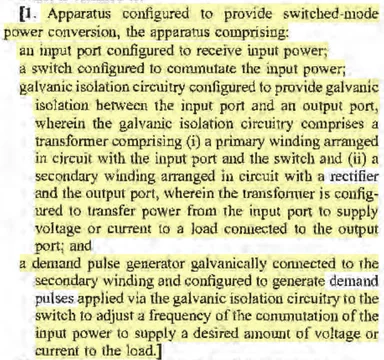Here is something you don't see everyday.
On Thursday, Judge Andrews granted a motion for summary judgment of invalidity for claims that failed to include a limitation from the spec.
In MHL Custom, Inc. v. Waydoo USA, Inc., C.A. No. 21-091-RGA (D. Del. Feb. 2, 2023), the patent at issue described a "passively stable hydrofoil." The hydrofoil is a board that a person can ride in the ocean, with a big fin under the water to keep it stable:

As the Court describes, the whole patent is focused on the board's stability feature:
The specification of the '659 Patent only, and repeatedly, describes the invention as being a watercraft that is either stable or at least has static stability. For example, the abstract of the patent recites, "A passively stable personal hydrofoil watercraft . ... " . . . The patent specification further recites, "The hydrofoil of the present invention has been designed to provide passive stability in the longitudinal direction, making traditional altitude control systems based on moveable surfaces unnecessary." . . .
Static stability distinguishes the invention from the prior art. The specification recites, "The prior art in powered hydrofoil surfboards have all relied on moveable surfaces for control, and have ignored the possibility of designing the hydrofoil for passive static stability. . . . [T]he present invention is specifically designed to achieve desired levels of stability and controllability without the need for moveable surfaces." . . . The patent specification further emphasizes that the hydrofoil should be designed to provide static stability to the watercraft, even for undisclosed embodiments. (Id. at col. 5 :62-65 ("Note that other versions of the hydrofoil are possible: the key is designing the hydrofoil for passive static stability via planform design, airfoil design, and span-wise twist distribution.")). The patent specification attributes the ability to be controlled by weight shift to the stability of the watercraft. The specification states, " This invention exploits passive stability to obviate the necessity for mechanisms or active control systems to provide stability. This passive stability allows the watercraft to be controlled by weight shift rather than by mechanical systems." . . . There is nothing in the patent specification to suggest that a watercraft that is both statically and dynamically unstable is part of the disclosure.
The parties agreed that one independent claim in the patent lacked any stability limitation. The Court found that no reasonable juror could find that the patent had sufficient written description to support a claim that lacked a stability limitation:
Plaintiff does not dispute that neither static stability nor dynamic stability (or both together) are limitations of the claims 16-20 of the '659 Patent. . . . I find that Defendants are entitled to summary judgment that claims 16-20 of the '659 Patent are invalid for lack of written description. The patent specification does not disclose that the patentee possessed a personal hydrofoil watercraft that lacks both static and dynamic stability. There is no genuine disputed fact about this.
The Court found analogized the situation to ICU Medical, Inc. v. Alaris Medical Sys., Inc., 558 F.3d 1368, 1377-79 (Fed. Cir. 2009), where the Federal Circuit likewise found that a claim was invalid because it disclosed a device with "spikes" in the spec, but then claimed a "spikeless" design:
I agree with Defendants that the present case is similar to ICU Medical. In ICU Medical, the patent at issue claimed medical valves with spikes and without spikes (i.e., valves without the spike limitation). The specification of the patent, however, only described " medical valves with spikes." . . . The Federal Circuit upheld the district court's grant of summary judgment that the "spikeless" claims were invalid for lack of written description because a POSA would not have understood the patentee to have invented a "spikeless" medical valve.
The Court here invalidated the claims for lack of written description because they were not limited to a stable design as described in the spec.
Overall, it looks like the Court may have gone a bit further than ICU Medical did, here. As the Court describes it, ICU Medical invalidated claims to a "spikeless" design where the spec disclosed only a spiked design. Here, however, the claims were agnostic about stability—which would seem to cover what the spec discloses (a stable board), but also extend beyond it (an unstable board).
As such, this decision could be useful for defendants in other cases with a clear disclosure in the spec and a claim that extends to cover basically the opposite of what's disclosed in the spec.
If you enjoyed this post, consider subscribing to receive free e-mail updates about new posts.




